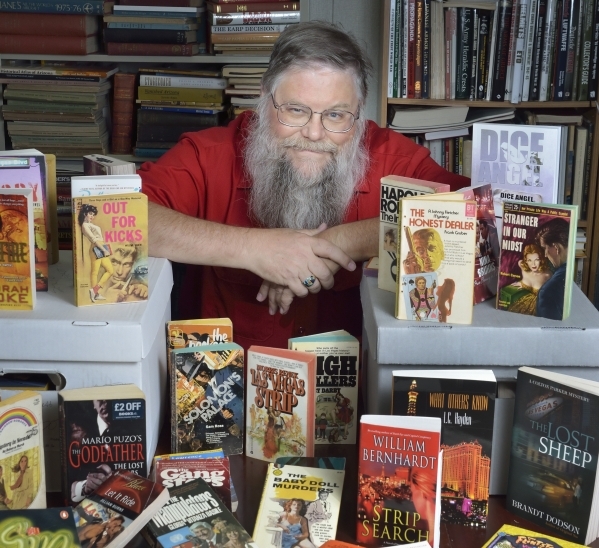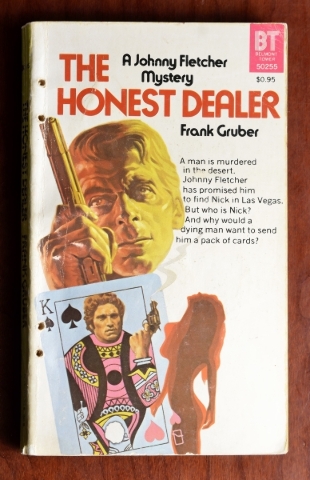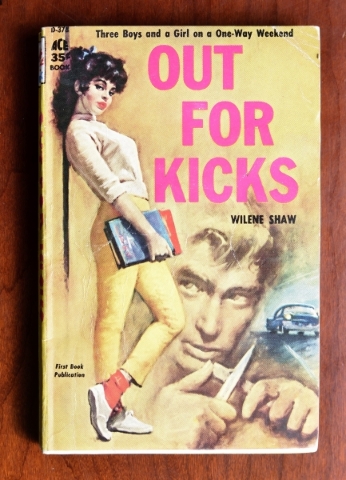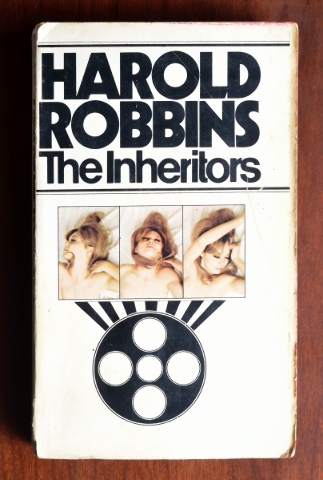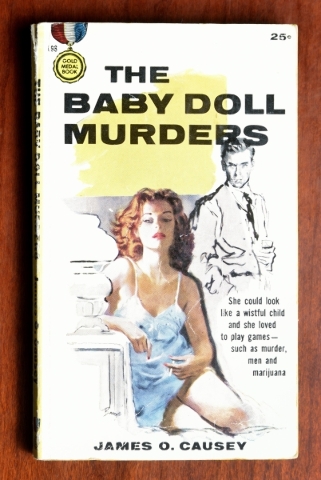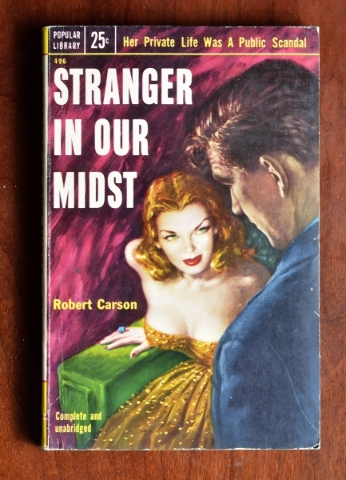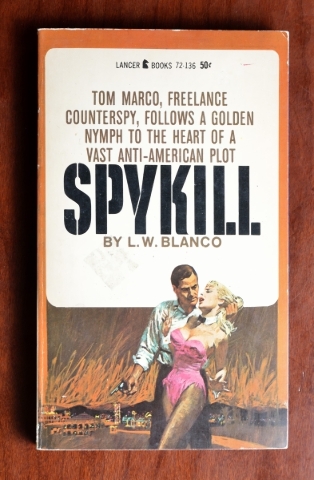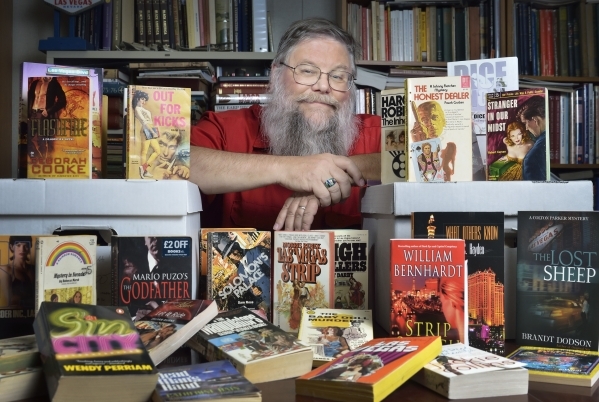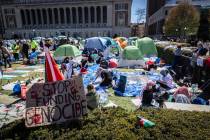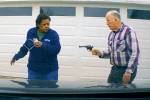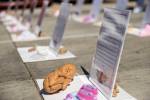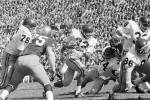Pulp fiction finds add modern twist to museum offerings
She was a flashy town, a sometimes blowsy and unforgiving town, but even on her worst day she could put most other burgs to shame. She was inviting, too, welcoming with a sweet, perfumed kiss anybody — hooker, mobster, spy, even the occasional upstanding citizen — who wanted what she had and was willing to pay the price. Together, they spun tales that left bumpkins from coast to coast both appalled and entranced …
Ahem.
It’s easy to fall into a pulpy frame of mind when checking out — OK, becoming embarrassingly engrossed in — the Clark County Museum's collection of Las Vegas-themed mass-market paperbacks.
For more than a decade, Mark Hall-Patton, Clark County museums administrator, has been picking up Vegas-themed paperbacks at used-book stores and other places where old books dwell and then donating them to the museum. For Hall-Patton, the books offer a peek into the shifting ways in which America has perceived Las Vegas in the decades since the 1950s.
He estimates that more than 1,200 books have been indexed so far, while another 200 to 300 await formal induction into the collection.
So what do the books — the kind millions of Americans have picked up at drugstores, bus stations and airports for inexpensive, quickly forgettable reads — say about Las Vegas? Is it a place filled with easy women and bad guys and good guys trying not to be bad? A playground for hard-boiled gumshoes, spies and vampires? A ground zero for torrid affairs and murder, sometimes at the same time?
Yep, check and you betcha.
Take, for instance, “The Honest Dealer” — billed as “A Johnny Fletcher Mystery,” like that’s supposed to mean something. It tempts prospective readers with a breathless but awkward cover blurb that reads: “A man is murdered in the desert. Johnny Fletcher has promised him to find Nick in Las Vegas. But who is Nick? And why would a dying man want to send him a pack of cards?”
Or “Out for Kicks,” about “three boys and a girl on a one-way weekend” and featuring an evocative cover image of a jailbaity strumpet circa 1958.
Or “Stranger in Our Midst” ("Her private life was a public scandal”), which originally could be had "complete and unabridged” for a mere quarter.
Or “Spykill,” in which “Tom Marco, freelance counterspy, follows a golden nymph to the heart of a vast anti-American plot.” Oh, L.W. Blanco, if that is your real name, you had us at “golden nymph.”
Or “The Baby Doll Murders," whose cover blurb reads: “She could look like a wistful child and she loved to play games — such as murder, men and marijuana." It's a tribute to the redhead on the cover that not even the odd wording is a turnoff.
But the weirdest thing about the books — weirder than even that girl on the cover of “The Girl From Las Vegas” who apparently has the hips of a Pilates-loving ferret — is that Hall-Patton hasn’t been tempted to read a single one of them.
Hall-Patton says he prefers history and biography for recreational reading. Besides, he adds, the aim is to consider the books from the standpoint of what they tell us about Las Vegas' past, viewing them "as a historian and not as a literary critic."
Doing the latter, he says, smiling, "would be shooting fish in a barrel.”
The collection includes books published in the '50s, '60s, '70s and onward. Were those earlier books at all prescient, offering predictions of a Las Vegas that eventually would come to pass?
“No, I don’t think so,” Hall-Patton says. “I think what it actually is is how the world views us.”
It was during the '50s that Las Vegas increasingly began to become a setting — and even, Hall-Patton says, a character of its own — in paperback murder mysteries, detective stories, spy novels and similar examples of genre fiction.
In those early mass-market paperbacks, Las Vegas was a place with no redeeming features, Hall-Patton says. In a way, the portrayal of Las Vegas as a mob-infested epicenter of sex, crime and violence represented a taking to extremes of the city's marketing effort then to portray itself as a nicely naughty alternative to more staid vacation spots.
In later decades, the portrayal of Las Vegas in mass-market paperbacks softens a bit, Hall-Patton says, even as other, less-sleazy Las Vegas-set stories — fantasy and paranormal stories, for instance — hit the bookshelves.
So the mass-market paperback universe thinks we're normal now? "I wouldn't go that far," Hall-Patton says, "because we're still a place to go and let your hair down."
Most of the books in the collection — which also includes paperback tie-ins of "CSI" and other TV shows and movies and books by self-published authors — are rarities. Few, if any, are likely to ever be reprinted or turned into e-books, and e-Bay or used-book shops are the only places to buy them.
And that's sad. Take the one that started it all: A paperback copy of Las Vegas journalist Jeff Rice's set-here vampire novel "The Night Stalker," which spawned a popular 1972 made-for-TV movie and a less-popular 1974-75 TV series, which wasn't set here.
"I didn't know who Jeff Rice was," Hall-Patton says. "I didn't know it was set here. I picked it up because I remembered the TV show, and then to see it was actually set here, oh, that's cool."
He has seen only two other copies of the book for sale. And although they're not available for librarylike loans, the books in the collection — which, Hall-Patton says, have cost the museum absolutely nothing — offer historians and researchers the opportunity to view Southern Nevada's evolution through an unusual, pop culture-colored lens.
"It's up to the museum to have a place that, 200 years from now, you could learn from us," Hall-Patton says. "So we have the (historical) houses, we've got everything from the showgirl outfits to the mining equipment. This is just another aspect of it, and it doesn't exist anywhere else."
Contact reporter John Przybys at jprzybys@reviewjournal.com or 702-383-0280 or follow @JJPrzybys on Twitter.



